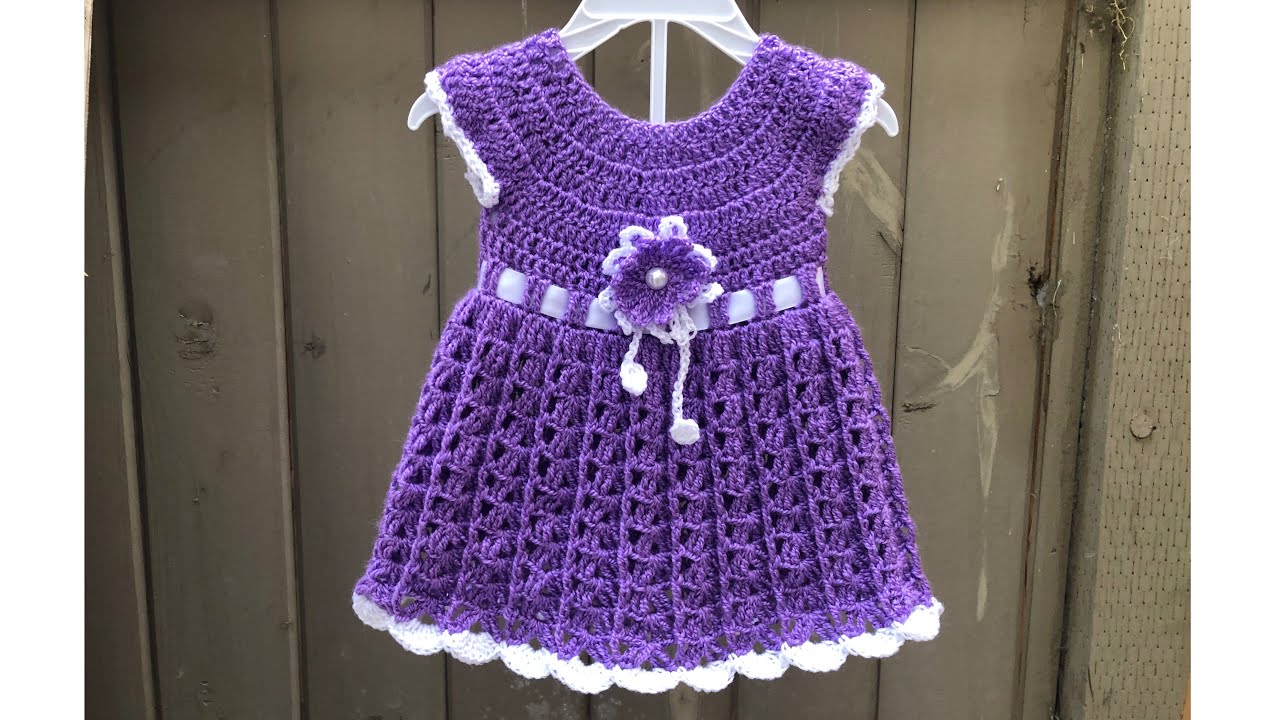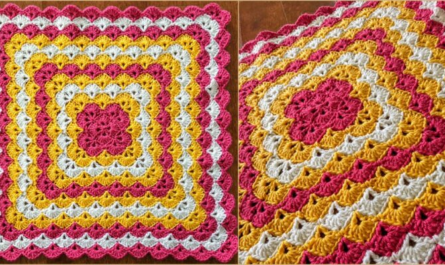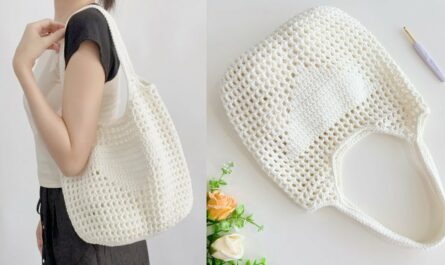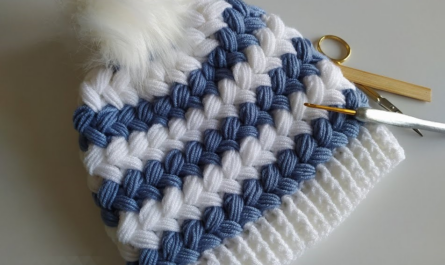There’s something incredibly special about dressing a new arrival in a garment made with love. A crocheted baby dress for a 0-3 month old is a perfect project: it’s a manageable size, incredibly soft and comfortable for delicate skin, and makes for an adorable outfit or a cherished gift. This detailed, step-by-step guide will walk you through creating a beautiful and cozy little dress, ideal for those precious first few months.
We’ll focus on a top-down, seamless raglan yoke construction – a highly recommended method for baby garments. It offers a comfortable fit with no bulky seams, allows for easy size adjustments, and progresses smoothly from the neckline down.
Why Choose Crochet for a 0-3 Month Baby Dress?
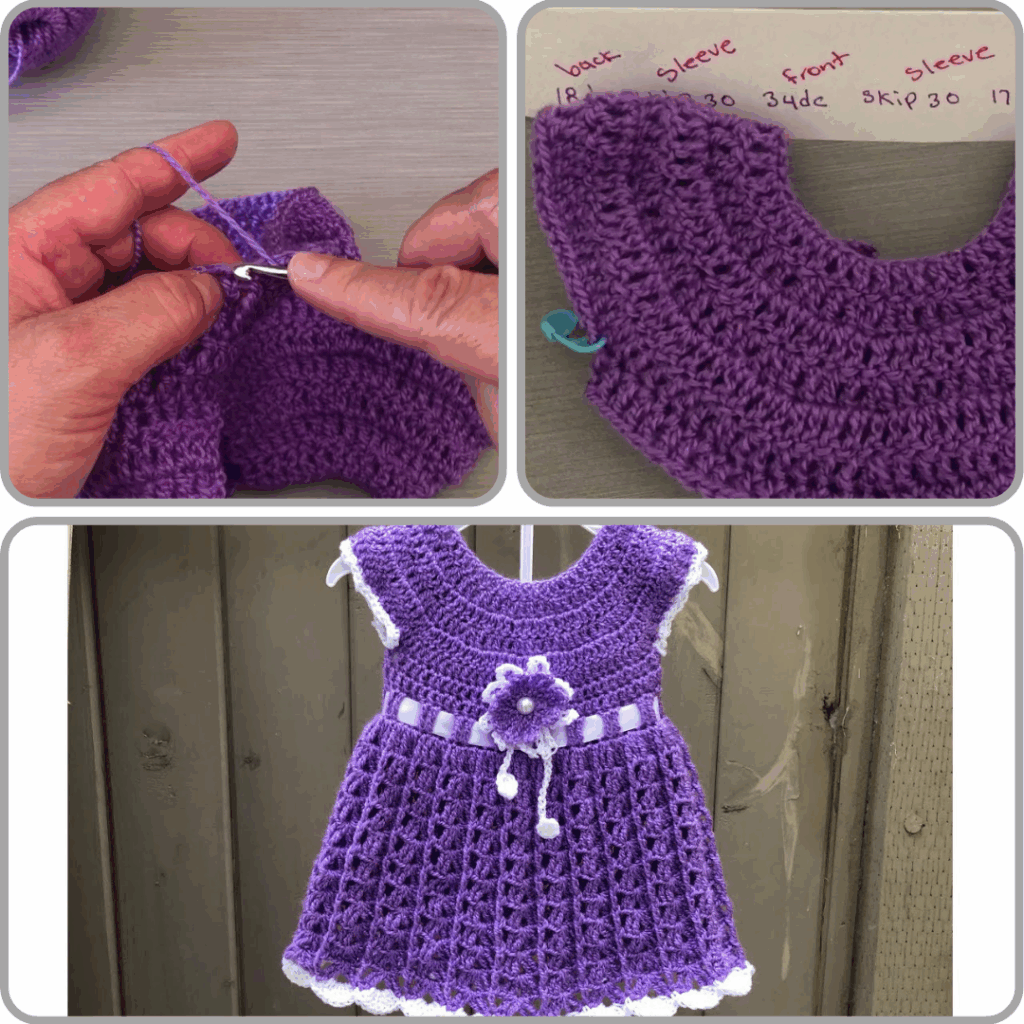
- Gentle on Skin: Crocheted fabrics are inherently soft and pliable, conforming gently to a baby’s delicate skin.
- Breathable: Natural fibers like cotton or wool blends, or even good quality acrylic, allow for air circulation, helping to regulate baby’s temperature.
- Unique & Personal: A handmade dress stands out from mass-produced items and carries the warmth of your personal touch.
- Customizable: You have endless choices in yarn color, fiber, and stitch patterns to create a truly unique garment.
- Heirloom Potential: A beautifully made baby dress can become a treasured keepsake, perhaps even passed down through generations.
Before You Begin: Gathering Your Tools & Materials
Selecting the right supplies is the first crucial step to ensure your dress is soft, safe, and beautiful for a newborn.
- Yarn (Prioritize Softness & Washability!):
- Fiber:
- 100% Cotton: Excellent for breathability, absorbency, and softness, especially in warmer climates. Look for mercerized cotton for a subtle sheen and great stitch definition.
- Superwash Merino Wool: Luxuriously soft, provides warmth without bulk, and is conveniently machine washable for busy parents.
- Baby-Specific Acrylic: Many modern acrylic yarns are incredibly soft, durable, hypoallergenic, and very easy to care for (often machine wash and dry).
- Weight: DK (Double Knitting) or Sport Weight are highly recommended for 0-3 month dresses. They provide a good balance of reasonable working speed and create a delicate, pliable fabric with good drape.
- Color: Soft pastels (like cream, pale blue, mint green, blush pink, lilac, or peach), classic neutrals (white, ivory, soft grey), or delicate variegated yarns work wonderfully.
- Quantity: For a 0-3 month dress, you’ll typically need between 150-250 yards (approx. 130-230 meters) of yarn, depending on the dress length and stitch pattern.
- Fiber:
- Crochet Hook:
- Your chosen yarn label will suggest a hook size (e.g., 3.5mm, 4.0mm).
- Crucial: The correct hook size for your gauge is more important than the label’s suggestion. You will likely need to adjust your hook size (up or down by half a size) to achieve the recommended gauge.
- Other Notions:
- Stitch Markers: Essential for marking raglan lines and the beginning of rounds.
- Tapestry Needle: For neatly weaving in ends.
- Scissors.
- Small Buttons: 3-5 small, flat buttons (approx. 0.5 inch / 1.25 cm) for the back closure. Choose delicate ones that complement your yarn color.
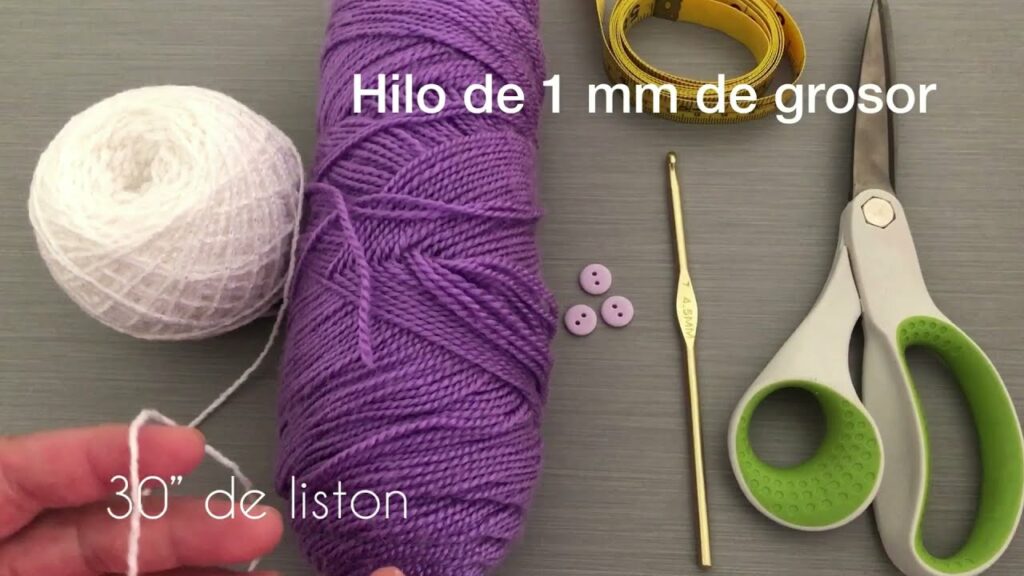
The Cornerstone of Success: Understanding 0-3 Month Sizing & Gauge
For a 0-3 month baby dress, precise fit is key. This size typically fits a baby with a chest circumference of around 16-18 inches (40-45 cm). The yoke depth (from neckline to underarm) for this size is usually about 5 inches (12.5 cm). Your gauge ensures your dress meets these critical dimensions for a comfortable fit.
How to Make a Gauge Swatch (Do NOT Skip This!):
- Chain: Chain about 20-25 stitches, plus the turning chains (e.g., ch 3 for dc) as per your chosen main stitch.
- Work: Crochet a square of at least 6×6 inches (15×15 cm) in the main stitch pattern you’ll be using for the dress (e.g., double crochet). A larger swatch provides a more accurate measurement.
- Wash & Block: Fasten off your swatch. Crucially, wash and block your swatch exactly as you plan to treat the finished dress. This step relaxes the fibers and reveals the true stitch size and drape, which can change significantly after washing.
- Measure: Once dry, lay the swatch flat. Place a ruler over the center. Count how many stitches fit within 4 inches (10 cm) and how many rows fit within 4 inches (10 cm).
- Adjust:
- If you have more stitches per inch than your pattern (or desired gauge) states (your work is too tight), go up half a hook size and try again.
- If you have fewer stitches per inch than your pattern states (your work is too loose), go down half a hook size and try again.
- Repeat until your gauge precisely matches.
General Stitch Patterns for a Baby Dress:
- Main Body:
- Double Crochet (dc): Works up quickly, creates a soft, draped fabric, excellent for dresses.
- Half Double Crochet (hdc): Creates a slightly denser fabric, good for structure and warmth.
- Edgings/Bands:
- Single Crochet (sc): Creates a firm, neat edge, good for necklines and button bands.
- Picot Stitch: (ch 3, sl st into 1st ch) creates a delicate, decorative scallop.
- Shell Stitch: Clusters of stitches (e.g., 5 dc in one st, skip 2, sl st) create a lovely, open, scalloped border often used for hems.
- Simple Decorative Stitches (for texture or subtle lace):
- V-Stitch: (dc, ch 1, dc in same st/sp) creates a simple openwork.
- Seed Stitch / Moss Stitch: (alternating sc, ch 1) creates a subtle, non-curling texture.
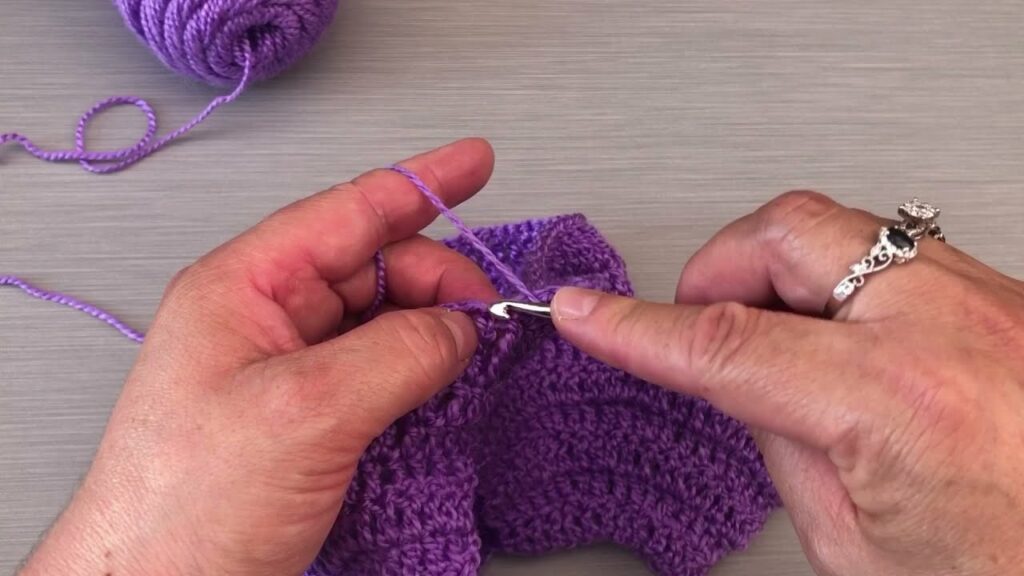
Step-by-Step Construction: Crocheting Your Baby Dress (0-3 Months)
This outline provides the fundamental steps for a top-down, seamless raglan dress with a back opening. For exact stitch counts and specific design elements, you will need to refer to a detailed crochet pattern for the 0-3 month size.
Abbreviations Used:
- ch: chain
- sc: single crochet
- hdc: half double crochet
- dc: double crochet
- sl st: slip stitch
- st(s): stitch(es)
- sk: skip
- inc: increase (e.g., 2 dc in one st)
- […] : repeat instructions in brackets
Phase 1: The Yoke (The Foundation of Fit)
The yoke forms the upper part of the dress, covering the shoulders and chest. It’s worked flat initially to create a back opening.
- Step 1.1: Starting the Neckline & Back Opening
- Foundation Chain: Chain the number of stitches specified by your pattern for a 0-3 month size. This chain forms your neckline. Ensure it’s an even number if working into stitches, or follow specific pattern recommendations.
- Neckband Rows: Ch 2 (counts as first hdc, or ch 1 for sc). Work 1 hdc (or sc) in the 3rd ch from hook and in each ch across. Turn. Work 2-3 more rows of hdc (or sc) to create a stable, neat neckband.
- Buttonholes: On one of the back placket edges (usually the wearer’s right side for easy dressing), you’ll create small buttonholes. A common placement is near the top, middle, and bottom.
- To make a simple horizontal buttonhole: Work to the desired buttonhole position, chain 2, skip the next 2 stitches, then continue working across. On the next row, work into the ch-2 space created by the chain.
- Step 1.2: Establishing Raglan Yoke & Increases This step creates the shoulder shaping.
- Divide Stitches: Take your total stitch count from the neckband. Your pattern will tell you how to divide these stitches for: Back Panel 1, Sleeve 1, Front, Sleeve 2, and Back Panel 2. You will have 4 raglan corners where increases will be made.
- (Example for illustrative purposes only, actual counts from your pattern: 7 sts for Back Panel 1, 9 sts for Sleeve 1, 13 sts for Front, 9 sts for Sleeve 2, 7 sts for Back Panel 2.)*
- First Yoke Row (Setting Up Raglan – Worked Flat):
- Ch 3 (counts as first dc). Work dc in stitches for Back Panel 1.
- Raglan Corner 1: Work your increase (e.g., [2 dc, ch 2, 2 dc] or [dc, ch 1, dc]) in the next stitch. Place a stitch marker in the ch-2 space (or ch-1 space).
- Work dc in stitches for Sleeve 1.
- Raglan Corner 2: Work increase and place marker.
- Work dc in stitches for Front.
- Raglan Corner 3: Work increase and place marker.
- Work dc in stitches for Sleeve 2.
- Raglan Corner 4: Work increase and place marker.
- Work dc in remaining stitches for Back Panel 2. Turn.
- Continuing Raglan Yoke Rows:
- Next Row: Ch 3. Work dc in each dc across, working your specified increase (e.g., [2 dc, ch 2, 2 dc]) into each ch-2 raglan space from the previous row. Move stitch markers up to the new ch-2 space. Turn.
- Repeat these increase rows until the yoke measures approximately 5 inches (12.5 cm) from the neckline to the underarm (the center of the raglan line). This ensures the correct fit for a 0-3 month old. Continue adding buttonholes on your placket if needed.
- Divide Stitches: Take your total stitch count from the neckband. Your pattern will tell you how to divide these stitches for: Back Panel 1, Sleeve 1, Front, Sleeve 2, and Back Panel 2. You will have 4 raglan corners where increases will be made.
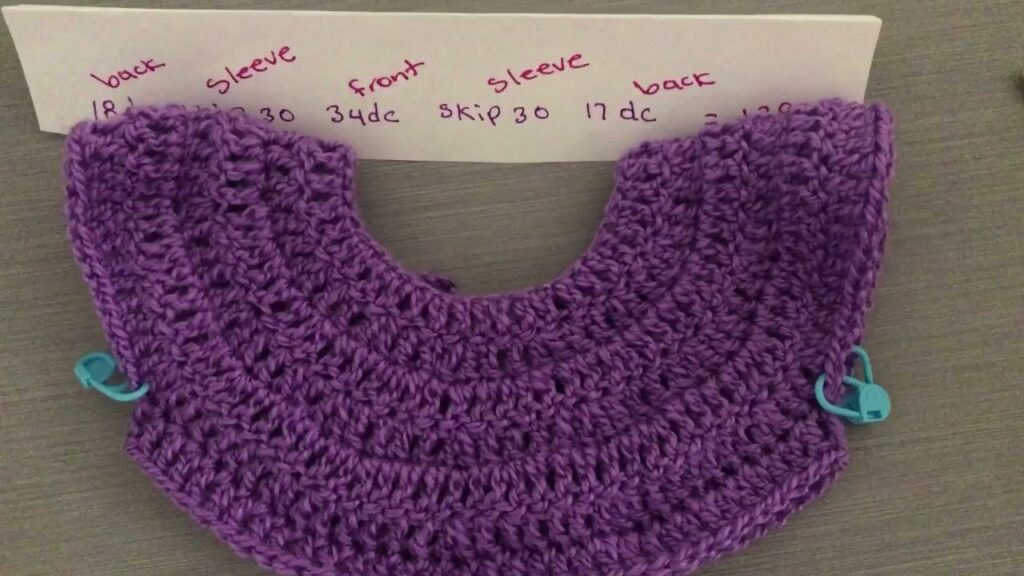
Phase 2: Body & Sleeves
Once the yoke is the correct depth, you’ll separate the body and sleeves.
- Step 2.1: Separating for Body and Sleeves
- Separation Row:
- Work stitches for Back Panel 1.
- Work 1 dc into Raglan Corner 1 (or as per pattern).
- Skip Sleeve 1: Skip all dc stitches of Sleeve 1.
- Underarm Chain: Chain 2-4 stitches (creates the underarm space; refer to pattern for exact number).
- Work 1 dc into Raglan Corner 2.
- Work dc in stitches for the Front Panel.
- Work 1 dc into Raglan Corner 3.
- Skip Sleeve 2: Skip all dc stitches of Sleeve 2.
- Underarm Chain: Chain 2-4 stitches.
- Work 1 dc into Raglan Corner 4.
- Work dc in stitches for Back Panel 2. Turn.
- Sleeve Stitches: Place the skipped sleeve stitches onto a piece of scrap yarn or a stitch holder for later.
- Separation Row:
- Step 2.2: Crocheting the Body/Skirt
- First Body Row: Ch 3. Work dc in each dc across, including working 1 dc into each chain of the underarm chains. Turn.
- Continuing the Body: Continue working rows of dc (keeping the back opening flat).
- Adding Flare (Optional, for an A-Line or Fuller Skirt): To create a beautiful A-line or fuller skirt, you can incorporate subtle increases.
- Simple Flare: On every 4th or 5th row, work 2 dc into a randomly chosen stitch (or evenly spaced stitches) about 4-6 times across the row. This will gradually widen the skirt.
- Using a Flaring Stitch: You can also switch to a stitch pattern like shell stitch or fan stitch, which naturally creates a lot of flare.
- Length: Continue working rows until the dress reaches the desired length for a 0-3 month baby (typically to the knee or mid-calf, around 12-14 inches / 30-35 cm total length from shoulder).
- Hem: Work 2-3 rows of sc or hdc for a neat, stable hem. Fasten off. You can add a decorative edging here if desired (e.g., picot or small shell border).
- Step 2.3: Crocheting the Sleeves (Optional)
- Attach Yarn: With your dress right side out, attach yarn to one of the underarm corners of a skipped sleeve.
- Pick Up Stitches: Ch 3 (counts as dc). Work dc into each dc stitch of the held sleeve stitches and 1 dc into each chain of the underarm chain. Join with a sl st to the top of the initial ch 3. (You are now working in the round.)
- Work Sleeve: Continue working dc rounds (or your desired sleeve stitch) until the sleeve reaches the desired length for a 0-3 month old (e.g., 0.5-1 inch for a cap sleeve, 3-4 inches for short sleeves, or 6-7 inches for long sleeves).
- Cuff: Work 2-3 rounds of sc or hdc for a neat cuff. Fasten off.
- Repeat: Repeat for the second sleeve.
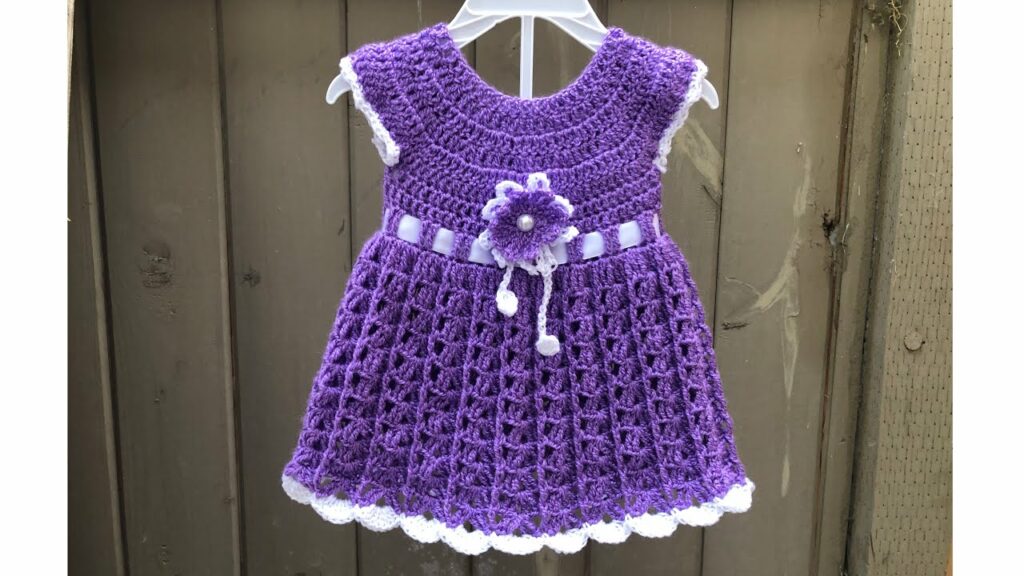
Phase 3: The Finishing Touches (Adding Polish & Charm)
This is where your dress transforms into a truly beautiful garment.
- Step 3.1: Edgings
- Neckline: Reattach yarn to one corner of the neckline. Work 1-2 rounds of sc or hdc around the entire neckline for a clean finish. You can add a picot edging or a small shell border for a delicate touch.
- Back Opening Bands: If you didn’t integrate buttonholes directly into the initial neckband, you’ll need to create button bands now. Pick up stitches evenly along both back opening edges. Work 2-3 rows of sc or hdc for each band. Create buttonholes on one side.
- Step 3.2: Weave in Ends: This is crucial for a professional, clean look. Use your tapestry needle to meticulously weave in all loose yarn tails, hiding them securely within the stitches on the wrong side.
- Step 3.3: Blocking (The Magic Step!):
- Gently wash your finished dress according to your yarn’s care instructions (often lukewarm water and a gentle soap).
- Gently squeeze out excess water (do not wring).
- Lay the dress flat on clean towels or blocking mats. Gently shape it to the correct dimensions for a 0-3 month size, smoothing out any unevenness and opening up any lace patterns. Use rust-proof pins to hold it in place.
- Allow the dress to air dry completely. Blocking is essential for setting the shape, evening out stitches, and enhancing the drape.
- Step 3.4: Attaching Buttons: Lay your dress flat and mark the positions for your buttons, aligning them with the buttonholes on the opposite placket. Securely sew on your chosen small buttons. Ensure they are sewn on very, very tightly with strong thread to prevent any choking hazard.
General Tips for Success & Baby Safety:
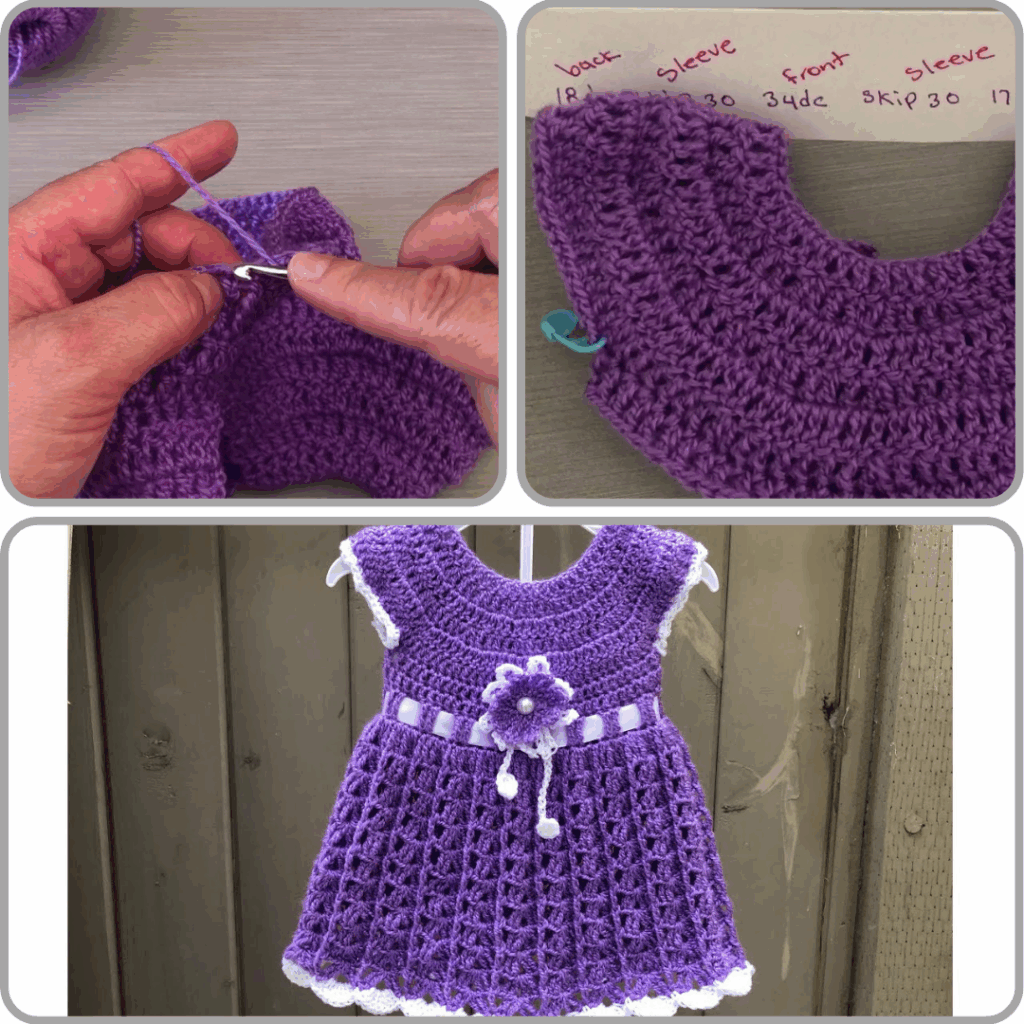
- Read Your Pattern Thoroughly: While this guide provides the method, a specific pattern for a 0-3 month size will give you the exact stitch counts and unique design details. Read it entirely before you start.
- Use Stitch Markers Generously: They are invaluable for marking raglan corners, the beginning of rounds, buttonhole placements, and any tricky sections.
- Count Your Stitches Regularly: Especially on increase rows/rounds. Counting prevents mistakes that are harder to fix later.
- Maintain Consistent Tension: Striving for even tension ensures your fabric has a uniform look and the correct drape.
- Take Breaks: Crocheting can be hard on the hands. Take frequent breaks to rest and stretch.
- Baby Safety First:
- Button Security: This is critical! Stitch buttons on very securely with strong thread. Check them regularly for any looseness.
- No Small Loose Embellishments: Avoid small beads, tiny bells, or anything that could potentially detach and become a choking hazard. If unsure, omit them.
- Avoid Long Ties: Do not add long drawstrings or ribbons around the neck or waist that could pose a strangulation risk.
Video Tutorial ;
Creating a crocheted dress for a 0-3 month baby is a wonderful and rewarding project. With patience, attention to detail, and a touch of your own creativity, you’ll craft a beautiful and comfortable garment that will be cherished long after she’s outgrown it. Happy crocheting! Sources
